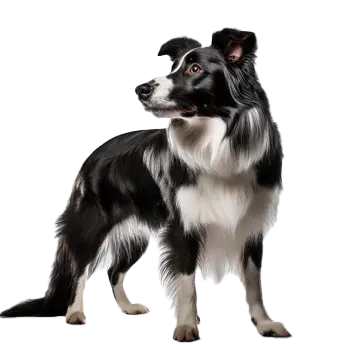Border Collies are generally healthy, robust dogs with a life expectancy of 12-15 years, though some individuals live well beyond this range with proper care. Their working heritage contributed to a relatively healthy gene pool, as breeding focused on functional ability rather than appearance. However, like all purebred dogs, Border Collies can be affected by certain genetic health conditions that potential owners should understand and breeders should screen for before breeding.
Hip dysplasia represents one of the most common orthopedic issues in Border Collies, occurring when the hip joint develops improperly, causing the ball and socket to rub abnormally. This creates inflammation, pain, and eventually arthritis. Symptoms include difficulty rising, reluctance to run or jump, and altered gait. Responsible breeders screen breeding stock through Orthopedic Foundation for Animals (OFA) or PennHIP evaluations. While genetics play a major role, maintaining appropriate weight and proper exercise during puppyhood can help minimize impact in dogs predisposed to the condition.
Collie eye anomaly (CEA) is an inherited developmental disorder affecting the eyes, ranging from mild changes that don't impact vision to severe abnormalities causing blindness. Reputable breeders test breeding stock and puppies at 6-8 weeks of age to identify affected individuals. Progressive retinal atrophy (PRA), another inherited eye condition, causes gradual degeneration of the retina, eventually resulting in blindness. Genetic testing identifies carriers of the PRA gene, allowing breeders to make informed decisions. Regular ophthalmologic examinations help detect eye conditions early.
Epilepsy affects some Border Collies, causing seizures that range from mild to severe. While frightening to witness, most epileptic dogs live normal lives with proper medication management. Epilepsy typically manifests between 1-5 years of age. Keeping a seizure log helps veterinarians adjust medication dosages. Trapped neutrophil syndrome, a rare but serious immune disorder, affects some Border Collie lines. Affected puppies typically die young, but genetic testing identifies carriers, allowing breeders to avoid producing affected puppies.
Neuronal ceroid lipofuscinosis (NCL), a progressive neurological disease, causes accumulation of lipopigments in the nervous system, leading to behavioral changes, loss of motor function, and premature death. Genetic testing identifies carriers, and responsible breeders test breeding stock to prevent producing affected puppies. Multidrug resistance (MDR1) gene mutation makes some Border Collies sensitive to certain medications, including ivermectin and other drugs. Testing identifies affected dogs, allowing veterinarians to choose safe medication alternatives.
Preventive care significantly impacts a Border Collie's long-term health and longevity. Regular veterinary checkups, ideally annually for young adults and twice yearly for senior dogs, allow early detection of developing problems. Vaccinations, parasite prevention, and dental care protect against preventable diseases and conditions. Maintaining appropriate body weight through proper nutrition and exercise reduces stress on joints and organs. High-quality dog food formulated for active breeds provides necessary nutrients without excess calories. Regular screening for common breed health issues through hip evaluations, eye examinations, and appropriate genetic testing enables early intervention when problems arise, potentially extending and improving quality of life.
Common Health Issues
- Hip dysplasia represents one of the most common orthopedic issues in Border Collies, occurring when the hip joint develops improperly, causing the ball and socket to rub abnormally.
- Epilepsy affects some Border Collies, causing seizures that range from mild to severe.
- Epilepsy typically manifests between 1-5 years of age.
Preventive Care & Health Monitoring
- While genetics play a major role, maintaining appropriate weight and proper exercise during puppyhood can help minimize impact in dogs predisposed to the condition.
- Preventive care significantly impacts a Border Collie's long-term health and longevity.
- Regular veterinary checkups, ideally annually for young adults and twice yearly for senior dogs, allow early detection of developing problems.
- Vaccinations, parasite prevention, and dental care protect against preventable diseases and conditions.
Regular veterinary check-ups and preventive care are essential for maintaining your Border Collie's health and longevity.

